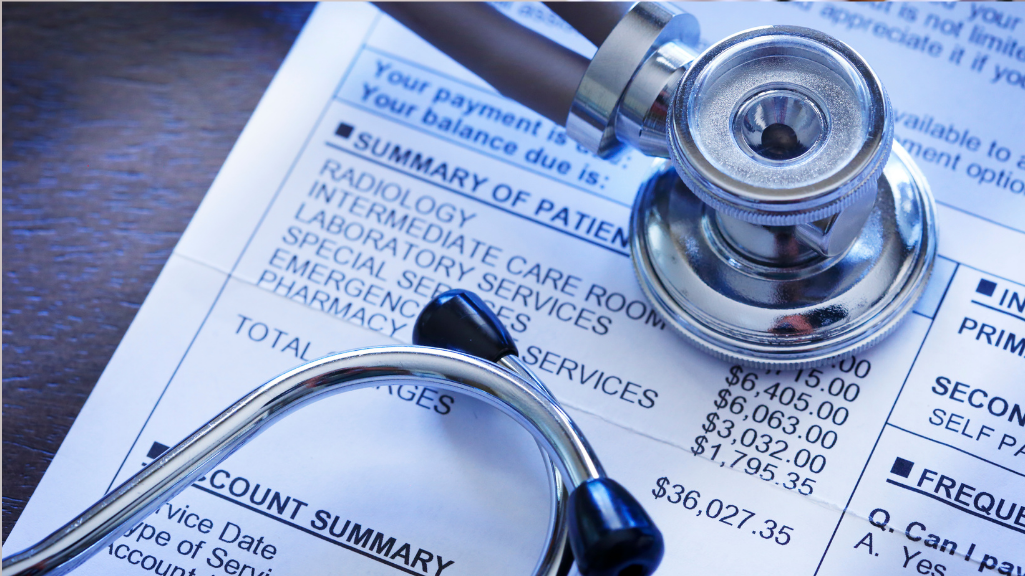Zepbound Diarrhea Treatment Options
Key TakeawaysZepbound (tirzepatide) is an FDA-approved medication primarily for weight management and improving obstructive sleep apnea by reducing body fat.Diarrhea is a [...]
Read More
Medically reviewed by Abhijit Bhattacharyya | MD, PhD, MBA, Tufts University School of Medicine - Miami, Florida on July 12th, 2025.
When it comes to healthcare, understanding costs can be a daunting task. Urgent care centers provide a convenient alternative to emergency rooms, offering treatment for non-life-threatening conditions. However, the cost of visiting these facilities can vary significantly based on several factors, including insurance plans, location, and the specific services received.
A copay, or copayment, is a fixed amount that a patient pays for a specific medical service at the time of the visit. This amount is predetermined by your health insurance plan and can vary depending on whether the service is for a primary care visit, a specialist visit, or urgent care. Typically, copays are designed to share the cost of healthcare between the insurer and the insured.
For urgent care visits, copays can range from as low as $20 to as high as $75 or more, depending on your insurance plan. It’s crucial to check your specific policy to understand what your copay will be when visiting an urgent care facility. Understanding these costs can help you budget for unexpected medical needs and avoid surprises when you receive care.
Moreover, many insurance plans have a cap on out-of-pocket expenses, which means that once you reach a certain limit in copays and other costs, your insurance may cover 100% of additional medical expenses for the remainder of the year. This can provide peace of mind, especially for those with chronic conditions or those who anticipate needing frequent medical attention.
 Factors Influencing Copay Amounts
Factors Influencing Copay AmountsSeveral factors can influence the amount of your copay at urgent care. These include:
Insurance Provider: Different insurance companies have varying copay structures. Some may have lower copays for urgent care visits, while others may charge more.
Plan Type: The type of health insurance plan you have (HMO, PPO, EPO, etc.) can affect your copay. For instance, HMO plans often have lower copays but may require you to see in-network providers.
Location: The geographic location of the urgent care center can also impact costs. Urban areas may have higher copays compared to rural locations due to the cost of living and operational expenses.
In addition to these factors, the specific services rendered during your urgent care visit can also influence the copay amount. For example, if you require additional tests, such as X-rays or lab work, these may incur separate charges that are not covered by the initial copay. It’s essential to inquire about any potential additional costs when receiving treatment. Furthermore, some urgent care centers may offer a transparent pricing structure, allowing patients to know upfront what they will be responsible for paying, which can alleviate financial concerns and enhance the overall patient experience.
Understanding the costs associated with urgent care is essential, especially when comparing it to other healthcare options like primary care visits and emergency room visits. Each option has its own set of costs and benefits.
Primary care physicians typically charge a copay that can range from $10 to $50, depending on your insurance plan. However, primary care visits may require appointments and can involve longer wait times. In contrast, urgent care centers usually allow for walk-in visits and often have extended hours, making them a more convenient option for non-emergency situations. Additionally, urgent care facilities are equipped to handle a variety of minor health issues, such as sprains, minor fractures, and infections, which can be particularly beneficial for patients who may not have a primary care physician available at the time of need. This flexibility can be a game-changer for individuals with busy schedules or those who may be traveling and require immediate care.
Emergency rooms are designed to handle life-threatening conditions and typically charge significantly higher copays, often ranging from $100 to $300 or more. The higher costs reflect the level of care provided and the resources available in an emergency setting. For minor injuries and illnesses, urgent care is often a more cost-effective choice. Moreover, the average wait time in an emergency room can exceed several hours, whereas urgent care centers often provide quicker service, with many patients being seen within 30 minutes to an hour. This efficiency not only saves time but also alleviates the stress associated with waiting in a crowded ER, making urgent care a preferred option for those seeking prompt treatment for less severe health issues.
Urgent care centers have gained popularity for several reasons. They offer a blend of convenience, accessibility, and affordability, making them an attractive option for many patients.
Urgent care facilities are often open evenings and weekends, catering to patients who may not have the flexibility to visit a primary care doctor during regular business hours. Many urgent care centers also accept walk-ins, allowing patients to receive care without an appointment. This flexibility is particularly beneficial for families with children, as it enables parents to seek medical attention for their little ones without the stress of scheduling conflicts. Additionally, with the rise of telemedicine, many urgent care centers now offer virtual visits, further enhancing accessibility for those who may be unable to travel due to illness or other constraints.
Despite being a more affordable option, urgent care centers provide quality medical care. Most facilities are staffed by qualified healthcare professionals, including physicians, nurse practitioners, and physician assistants. They can treat a wide range of conditions, from minor fractures to infections, and often have on-site diagnostic capabilities like X-rays and lab tests. Furthermore, many urgent care centers are equipped to handle common emergencies, such as allergic reactions or asthma attacks, ensuring that patients receive timely and effective treatment. This comprehensive approach not only alleviates the burden on emergency rooms but also fosters a more personalized patient experience, as healthcare providers often take the time to discuss treatment options and follow-up care with patients.
In addition to traditional urgent care visits, telehealth services have become increasingly popular. Doctronic.ai offers patients the ability to consult with healthcare professionals from the comfort of their homes. This can be particularly beneficial for those who may not have easy access to urgent care facilities or prefer to avoid in-person visits. Furthermore, telehealth can significantly reduce the time spent waiting for an appointment, allowing patients to receive timely care without the hassle of commuting or long wait times in crowded waiting rooms.
Telehealth services provide several advantages, including:
Cost-Effective: Many telehealth services have lower copays compared to in-person visits. For example, Doctronic.ai offers telehealth consultations for under $40, making it an affordable option for many patients.
Accessibility: Patients can receive care from anywhere, eliminating the need for transportation and wait times associated with urgent care visits.
Comprehensive Care: Telehealth platforms often utilize advanced AI technology to provide personalized care, drawing on the latest medical research to offer accurate diagnoses and treatment recommendations.
Moreover, telehealth services can be particularly advantageous for individuals with chronic conditions who require regular monitoring and check-ins. These patients can easily schedule follow-up appointments without the burden of travel, ensuring they stay on top of their health management plans. Additionally, telehealth can enhance the continuity of care, as healthcare providers can access a patient's medical history and previous consultations more readily, leading to better-informed decisions and tailored treatment plans.
Another notable benefit of telehealth is its ability to facilitate mental health services. With the growing recognition of mental health as a crucial aspect of overall well-being, telehealth platforms provide a safe space for individuals to seek therapy and counseling. This can be especially important for those who may feel stigmatized or uncomfortable seeking help in person. The convenience of virtual sessions allows patients to engage with mental health professionals from their own homes, making it easier to prioritize their mental health needs.
When visiting an urgent care center, it’s helpful to know what to expect to ensure a smooth experience. Understanding the process can alleviate some of the stress associated with seeking medical care.
Upon arrival at the urgent care facility, patients will typically check in at the front desk. This process may involve providing personal information, insurance details, and the reason for the visit. Some centers may also offer online check-in options to streamline the process.
After check-in, patients will be seen by a healthcare provider who will conduct a medical evaluation. This may include a physical examination, medical history review, and any necessary diagnostic tests. The provider will then discuss the findings and recommend a treatment plan.
Before leaving the urgent care center, patients will be required to pay their copay. It’s essential to have your insurance card on hand, as this will help determine the exact amount owed. If you have questions about your copay or coverage, the staff can assist you in understanding your financial responsibility.
Understanding how insurance works with urgent care visits is crucial for managing healthcare costs. Most insurance plans cover urgent care visits, but the extent of coverage can vary.
Insurance plans often have a network of preferred providers. Visiting an in-network urgent care center typically results in lower copays and out-of-pocket costs. Conversely, visiting an out-of-network facility may lead to higher expenses, as insurance may cover a smaller portion of the visit.
For those without insurance or preferring not to use it, many urgent care centers offer self-pay options. These rates can be competitive, often ranging from $100 to $200 for a visit, depending on the services rendered. It’s advisable to inquire about self-pay rates before your visit.
 When to Use Urgent Care
When to Use Urgent CareKnowing when to visit urgent care can save time and money. Urgent care is appropriate for a variety of conditions, but not all health issues require this level of care.
Urgent care centers can treat a wide range of non-life-threatening conditions, including:
Minor injuries (sprains, strains, fractures)
Illnesses (colds, flu, infections)
Skin conditions (rashes, insect bites, minor burns)
Diagnostic services (X-rays, lab tests)
In contrast, emergency rooms should be reserved for life-threatening situations, such as:
Severe chest pain or difficulty breathing
Uncontrolled bleeding
Loss of consciousness
Severe allergic reactions
Understanding the costs associated with urgent care visits, including copays, is essential for making informed healthcare decisions. By comparing urgent care to other options like primary care and emergency rooms, patients can choose the best course of action for their needs.
For those seeking a more convenient and cost-effective option, telehealth services like Doctronic.ai provide an innovative solution, allowing patients to access quality care from the comfort of their homes. As healthcare continues to evolve, staying informed about available options will empower patients to take control of their health and well-being.
Why wait for urgent care when you can get immediate, personalized medical advice from the comfort of your home? Doctronic is not just another telehealth service; it's the #1 AI Doctor that's transforming direct-to-patient care. With over 10 million users and growing, our platform offers free AI doctor visits, providing you with a diagnosis in seconds that you can take to any doctor for further help and treatment. If you need more, our telehealth video visits connect you with our doctors 24/7 across all 50 states for less than $40. Experience faster, smarter, and more personal healthcare today. Skip the line. Talk to an AI Doctor Now, for free.
Key TakeawaysZepbound (tirzepatide) is an FDA-approved medication primarily for weight management and improving obstructive sleep apnea by reducing body fat.Diarrhea is a [...]
Read MoreKey TakeawaysZepbound is a once-weekly injectable medication for weight management and obstructive sleep apnea (OSA) linked to obesity.Taking Zepbound a day early is [...]
Read MoreKey TakeawaysZepbound is an FDA-approved medication for chronic weight management in adults with obesity or overweight, and for moderate to severe obstructive sleep apnea [...]
Read More